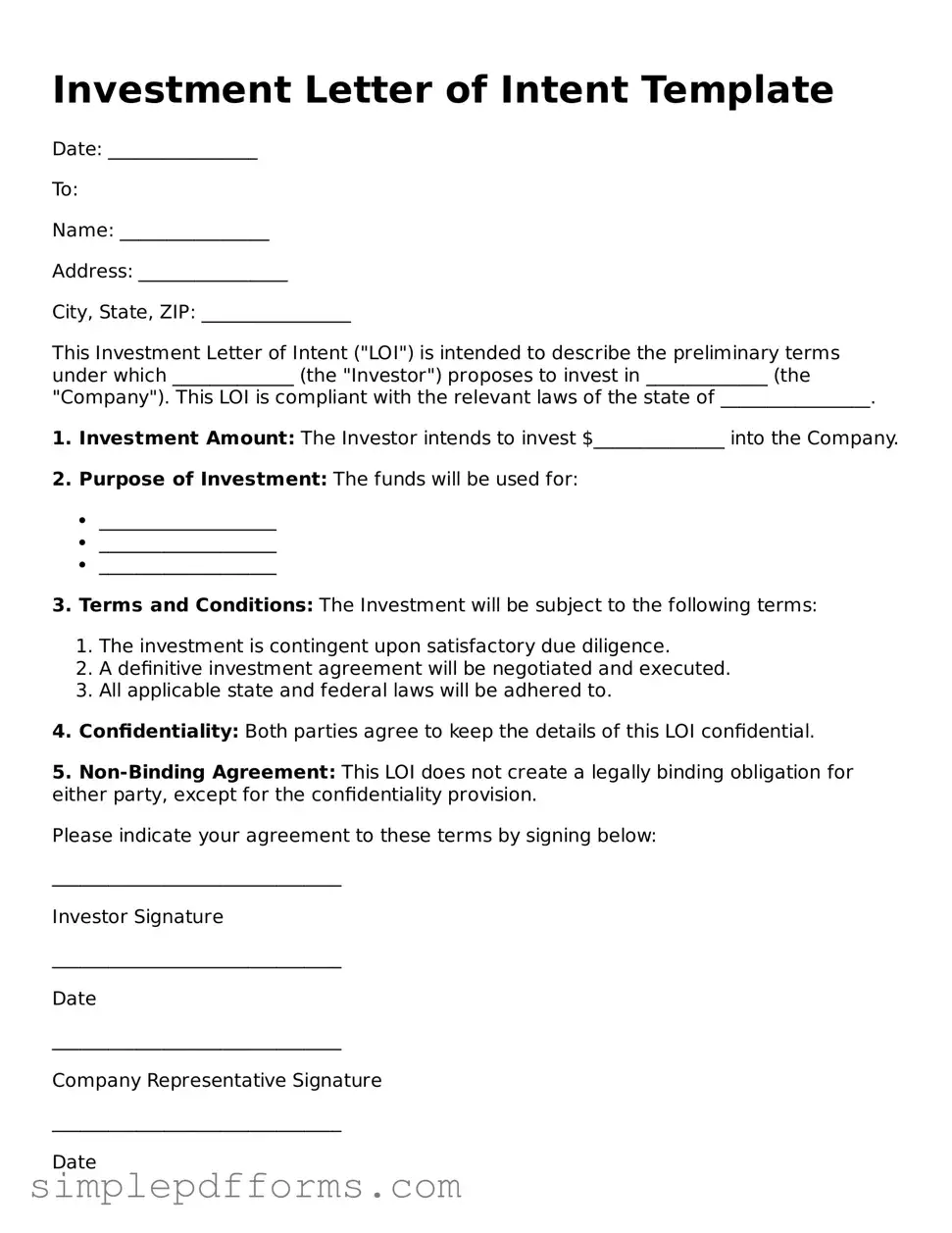Investment Letter of Intent Template
Date: ________________
To:
Name: ________________
Address: ________________
City, State, ZIP: ________________
This Investment Letter of Intent ("LOI") is intended to describe the preliminary terms under which _____________ (the "Investor") proposes to invest in _____________ (the "Company"). This LOI is compliant with the relevant laws of the state of ________________.
1. Investment Amount: The Investor intends to invest $______________ into the Company.
2. Purpose of Investment: The funds will be used for:
- ___________________
- ___________________
- ___________________
3. Terms and Conditions: The Investment will be subject to the following terms:
- The investment is contingent upon satisfactory due diligence.
- A definitive investment agreement will be negotiated and executed.
- All applicable state and federal laws will be adhered to.
4. Confidentiality: Both parties agree to keep the details of this LOI confidential.
5. Non-Binding Agreement: This LOI does not create a legally binding obligation for either party, except for the confidentiality provision.
Please indicate your agreement to these terms by signing below:
_______________________________
Investor Signature
_______________________________
Date
_______________________________
Company Representative Signature
_______________________________
Date
Contact Information:
Email: ________________
Phone: ________________
